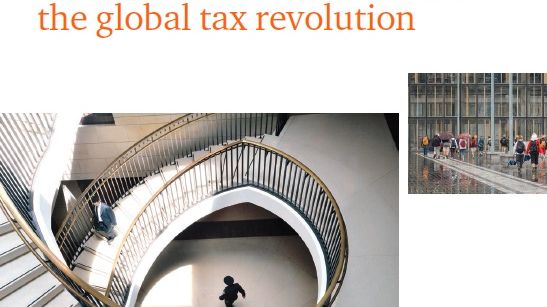
Press release -
PwC: Disruption is the new reality in the global insurance industry
| Date | Monday, 15 June 2015 |
| Contact |
Candy Li
Tel: +65 6236 7429 Mobile: +65 8613 8820e-mail: candy.yt.li@sg.pwc.com |
| Pages | 3 |
PwC: Disruption is the new reality in the global insurance industry
Singapore, 15 June 2015 -- The pace of change in the global insurance industry is occurring more rapidly than could have been envisaged, concludes a report just published by PwC. The report concludes that the industry is at a pivotal juncture as it grapples with changing customer behaviour, new technologies and new distribution and business models.
In 2010, PwC began carrying out scenario analysis of the trends reshaping insurance and what the industry would look like by 2020, drawing on interviews with more than a thousand executives worldwide. The report, ‘ Insurance 2020 and Beyond: Necessity is the mother of reinvention’, findings of which will be unveiled today at the IIS Global Insurance Forum in New York, reviews ongoing developments against PwC’s initial projections. It looks ahead to the major trends that will develop in the global insurance industry over the next five years and beyond, and how businesses can design their strategy to face the future and capitalise on them.
Commenting on the report, Billy Bennett, Insurance Leader, PwC Singapore said:
“The report findings highlight the pace of change in the global insurance industry. Many of the findings of the report are becoming the new reality in Singapore. Shifting customer expectations in terms of product design, digitisation, advanced analytics and the ongoing impact of regulatory change are likely to be challenges that the sector in Singapore will be faced with over the next 5 years. Insurers locally are not backing away from these challenges and have embarked on this journey.”
Customer revolution
Customers expect the same ease of doing business from insurers that they do from retailers. Digital developments have enabled the insurers to deliver anytime, anywhere convenience via a seamless multichannel experience, streamline operations, and reach untapped segments.
Digital developments also are helping insurers to enhance their customer profiling, develop sales leads, tailor financial solutions to individual needs and, for non-life businesses in particular, improve claims assessment and settlement. However, and in a threat to the existing order, many new market entrants are using advanced profiling techniques and cost-efficient digital distribution just as or even more effectively than incumbent competitors.
Said Antony Eldridge, Financial Services Leader, PwC Singapore:
“Today, disruption at multiple fronts is part of every industry and our findings demonstrate that companies now, more than ever, need to embrace digital disruption. The whole financial services landscape is being disrupted and leaders in the insurance industry, in particular, are leveraging digital to engage more closely with customers, to fine-tune underwriting and to develop customised risk and financial solutions. Customers are increasingly becoming more tech-savvy and this is not something particularly new – however this does mean, that from an insurance standpoint, it is now all about how quickly insurers innovate and adapt to customers’ digital behaviour.”
Digitisation
Most insurers have invested in digital distribution. Some are even moving beyond direct digital sales to embedding the company in people’s lives (e.g. pay-as-you drive insurance). This has coincided with the proliferation of new sources of information and analytical techniques that are beginning to reshape customer targeting, underwriting, and financial advice.
According to PwC, as sensors and other digital intelligence become a more pervasive as part of the ‘Internet of Things’, savvy insurers can become trusted partners in areas ranging from health and well-being to home and commercial equipment care. In turn, digital technology could extend the reach of life and pension coverage into largely untapped segments such as younger and lower income segments by reducing costs and allowing businesses to engage with customers in more compelling and relevant ways.
Analytics: The emerging game changer
The combination of big data analytics, sensor technology and communicating networks could allow insurers to anticipate risks and customer demands with far greater precision than ever before. The benefits could include not only keener pricing and sharper customer targeting, but a decisive shift in insurers’ value model from reactive claims payer to preventative risk advisors.
Said Billy Bennett, Insurance Leader, PwC Singapore:
“The important thing now is to turn digital disruption into advantage. By having the right digital technology, insurers can strengthen their analytics capabilities and see a real impact on efficiency. For example, insurers can increasingly achieve stronger conversion rates by using prescriptive analytics to improve the sales conversion ratio in automated insurance underwriting by continually adjusting price and coverage based on predicted take-up and actual deviations from it.”
New business models
Many forward-looking insurers – and aforementioned new market entrants – are developing new business models. Prescient companies are striving for a faster and more flexible, data-led iterative approach, similar to what many telecoms and technology companies use. Some of them also are working with reinsurance and investment management companies to create a new generation of health, wealth and retirement solutions. According to PwC, the pace of change will only accelerate in the coming years as new innovations become mainstream in areas ranging from automated driver assistance systems (ADAS) to crowdsourced models of risk evaluation and transfer.
Antony Eldridge, Financial Services Leader, PwC Singapore concludes:
“For insurers, it is no longer about responding to disruption – it is about how quickly you respond to make the most of the potential that disruption offers. Given the number of developments that are impacting the insurance industry, insurers need to have a clear vision of where they want to be and identify key areas that they will compete in. Based on this, it is much easier to determine and prioritise which disruptive force needs more attention and investment.”
ENDS
Notes to Editors:
*80 insurance CEOs in 37 countries were interviewed for PwC’s 18 th Annual Global CEO Survey, ‘A marketplace without boundaries? Responding to disruption’ (www.pwc.com/ceosurvey)
PwC’s report ‘ Insurance 2020 and Beyond: Necessity is the mother of reinvention’, is a review of developments in the Global Insurance space against initial projections as set out in PwC’s Insurance 2020 report. It looks ahead to major trends that are likely to occur over the next five years and beyond, based on what has transpired between 2010 and 2015.
Topics
Categories
About PwC
PwC helps organisations and individuals create the value they’re looking for. We’re a network of firms in 157 countries with more than 184,000 people who are committed to delivering quality in assurance, tax and advisory services. Tell us what matters to you and find out more by visiting us at www.pwc.com.
PwC refers to the PwC network and/or one or more of its member firms, each of which is a separate legal entity. Please see www.pwc.com/structure for further details.
© 2015 PricewaterhouseCoopers. All rights reserved.



